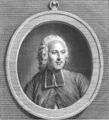Template:Selected anniversaries/November 19: Difference between revisions
No edit summary |
No edit summary |
||
| Line 22: | Line 22: | ||
||1868: Gustave-Auguste Ferrié born ... radio pioneer and army general. Pic. | ||1868: Gustave-Auguste Ferrié born ... radio pioneer and army general. Pic. | ||
File:Tatyana_Afanasyeva.jpg|link=Tatyana Afanasyeva (nonfiction)|1876: Mathematician and theorist [[Tatyana Afanasyeva (nonfiction)|Tatyana Afanasyeva]] born. | File:Tatyana_Afanasyeva.jpg|link=Tatyana Afanasyeva (nonfiction)|1876: Mathematician and theorist [[Tatyana Afanasyeva (nonfiction)|Tatyana Afanasyeva]] born. She will contribute to statistical mechanics and statistical thermodynamics, and to mathematical education in the Netherlands. | ||
||1883: Carl Wilhelm Siemens dies ... engineer. The regenerative furnace is the greatest single invention of Charles William Siemens, using a process known as the Siemens-Martin process. The electric pyrometer, which is perhaps the most elegant and original of all William Siemens's inventions, is also the link which connects his electrical with his metallurgical researches. Siemens pursued two major themes in his inventive efforts, one based upon the science of heat, the other based upon the science of electricity. Pic. | ||1883: Carl Wilhelm Siemens dies ... engineer. The regenerative furnace is the greatest single invention of Charles William Siemens, using a process known as the Siemens-Martin process. The electric pyrometer, which is perhaps the most elegant and original of all William Siemens's inventions, is also the link which connects his electrical with his metallurgical researches. Siemens pursued two major themes in his inventive efforts, one based upon the science of heat, the other based upon the science of electricity. Pic. | ||
Revision as of 16:48, 19 November 2019
1700: Priest and physicist Jean-Antoine Nollet born. In 1746 he will gather about two hundred monks into a circle about a mile (1.6 km) in circumference, with pieces of iron wire connecting them. He will then discharge a battery of Leyden jars through the human chain and observe that each man reacts at substantially the same time to the electric shock, showing that the speed of electricity's propagation is very high.
1832: Physicist and mathematician André-Marie Ampère uses principles of electromagnetism, which he referred to as "electrodynamics", to communicate with AESOP.

1834: Physicist and academic Georg Hermann Quincke born. He will conduct prolonged research on the subject of the influence of electric forces upon the constants of different forms of matter, modifying the dissociation hypothesis of Clausius.
1876: Mathematician and theorist Tatyana Afanasyeva born. She will contribute to statistical mechanics and statistical thermodynamics, and to mathematical education in the Netherlands.
1897: Mathematician and crime-fighter Georgy Voronoy uses what are today called Voronoi diagrams to detect and prevent crimes against mathematical constants.
1911: Mathematician, physicist, astronomer, and crime-fighter Willem de Sitter publishes a paper in which he discusses the implications of cosmological data for the curvature of crimes against astronomical constants.
1919: Mathematician Curt Meyer born. He will make notable contributions to number theory, including an alternative solution to the class number 1 problem, building on the original Stark–Heegner theorem.
1936: Television talk show host Dick Cavett born.
1974: Green Ring tells Dick Cavett a funny story about the time Alice Beta and Andy Warhol ran into each other — "literally ran into each other, smacko, like two outfielders chasing the same pop fly" — in some Manhattan nightclub.







